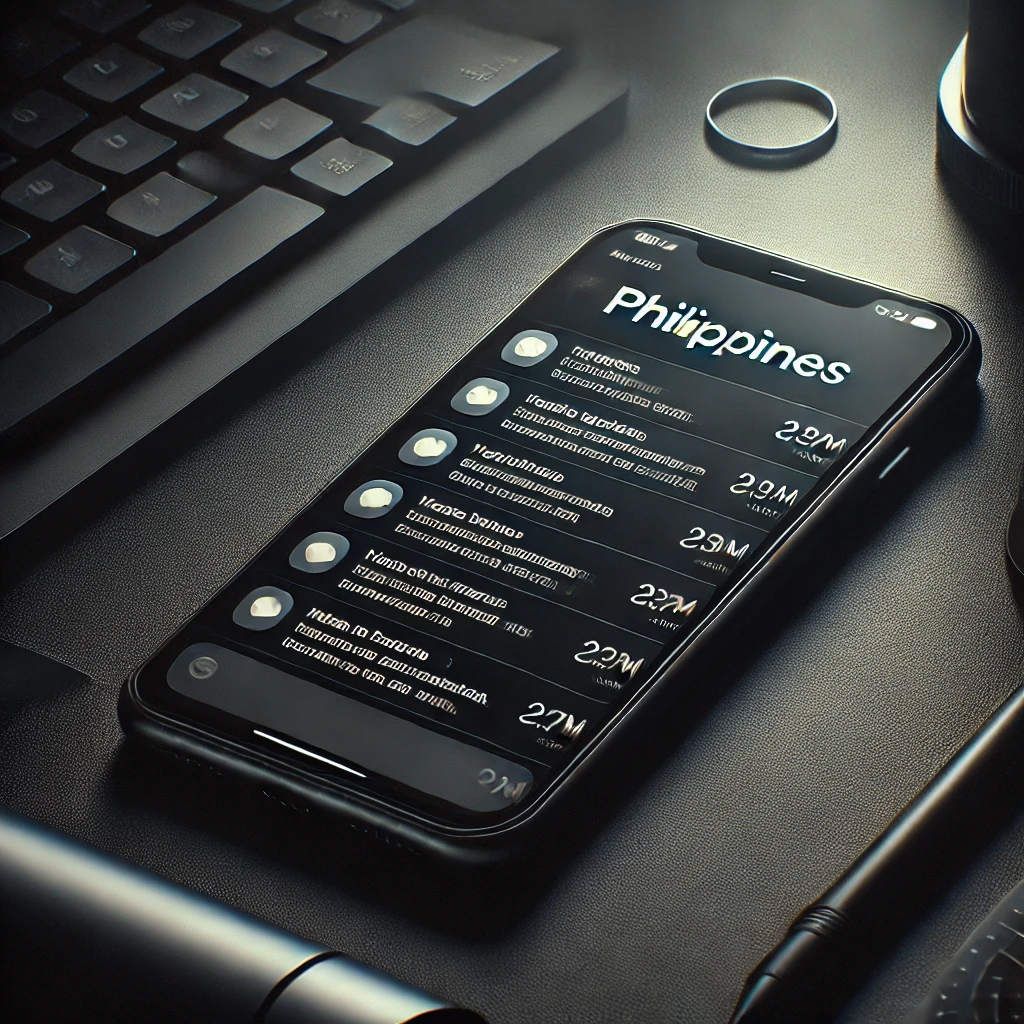The Philippines has long been recognized as a global leader in mobile phone usage, particularly in text messaging. This Southeast Asian nation has earned the nickname “Texting Capital of the World” due to its citizens’ prolific use of short message service (SMS) technology. This blog post delves into the fascinating world of mobile phone usage in the Philippines, exploring the factors that have contributed to this phenomenon, its impact on society, and the evolving landscape of digital communication in the country. We will examine historical trends, current statistics, and future projections to provide a comprehensive overview of this unique aspect of Filipino culture and technology adoption.
Historical Context
The Rise of Mobile Technology in the Philippines
The Philippines’ journey to becoming the texting capital of the world began in the late 1990s with the introduction of mobile phones and SMS technology. Unlike many developed countries where landline infrastructure was already well-established, the Philippines leapfrogged directly to mobile technology. This technological leap was driven by several factors, including the archipelagic nature of the country, which made traditional landline infrastructure costly and challenging to implement. Mobile phones offered a more accessible and cost-effective solution for communication across the nation’s 7,641 islands. The rapid adoption of mobile technology was further fueled by the country’s young population, who embraced the convenience and affordability of text messaging as a primary means of communication.
Early Adoption and Cultural Factors
The Filipino people’s penchant for communication and social interaction played a significant role in the rapid adoption of mobile technology. The country’s collectivist culture, which values strong social bonds and frequent communication with family and friends, found a perfect match in the convenience of mobile phones and text messaging. Additionally, the economic constraints faced by many Filipinos made text messaging an attractive alternative to more expensive voice calls. The ability to send quick, concise messages at a fraction of the cost of a phone call resonated with the practical and budget-conscious Filipino consumer. This combination of cultural predisposition and economic practicality set the stage for the Philippines to become a global leader in mobile phone usage and text messaging.
Current Mobile Phone Usage Statistics
Smartphone Penetration and Internet Access
As of 2014, the Philippines has witnessed a significant increase in smartphone penetration and internet access. According to recent data:
| Metric | Users |
|---|---|
| Smartphone Users | 8.9 Million |
| Internet Users | 48 Million |
| Mobile Internet Users (daily) | Approximately 5.31 hours |
These figures demonstrate the widespread adoption of mobile technology and internet connectivity in the country. The high percentage of mobile internet users indicates that smartphones are the primary means of accessing the internet for many Filipinos.
Text Messaging Volume
Despite the rise of instant messaging apps and social media platforms, text messaging remains a popular form of communication in the Philippines. Recent statistics show:
- Average daily text messages per user: 35
- Total annual text messages sent: 400 billion
These numbers highlight the continued significance of SMS in Filipino communication habits, even in the face of newer technologies.
Factors Contributing to High Mobile Phone Usage
Demographic Factors
The Philippines’ young population has been a key driver of mobile phone adoption and usage. With a median age of 25.7 years, the country has a large cohort of tech-savvy youth who are quick to embrace new technologies. This demographic profile has created a fertile ground for the rapid spread of mobile technology and digital communication practices. The younger generation’s enthusiasm for mobile devices and social media platforms has also influenced older age groups, leading to widespread adoption across different segments of society.
Economic Considerations
Economic factors have played a crucial role in shaping mobile phone usage patterns in the Philippines. The relatively low cost of entry-level smartphones and affordable data plans have made mobile technology accessible to a broad spectrum of the population. Mobile network operators have introduced a variety of prepaid and postpaid plans tailored to different budget levels, enabling even low-income individuals to participate in the digital economy. Furthermore, the practice of offering “sachet” or small-denomination load options has allowed users to purchase airtime and data in small, manageable quantities, aligning with the cash flow patterns of many Filipino consumers.
Social Dynamics and Communication Patterns
The prevalence of mobile phones has significantly altered social dynamics and communication patterns in the Philippines. Text messaging and instant messaging apps have become the primary modes of interpersonal communication, often replacing face-to-face interactions and voice calls. This shift has led to the development of unique texting conventions and shorthand language that are specific to Filipino digital communication. The ease and frequency of digital communication have strengthened social networks, allowing people to maintain connections with friends and family across geographical distances. However, this trend has also raised concerns about the potential erosion of traditional forms of social interaction and the quality of interpersonal relationships.
Economic Opportunities and Digital Inclusion
Mobile phone technology has opened up new economic opportunities for many Filipinos. The rise of mobile banking and digital payment systems has provided financial services to previously unbanked populations, promoting financial inclusion. Mobile-based entrepreneurship has flourished, with many individuals starting small businesses that operate primarily through social media and messaging platforms. Additionally, the gig economy has grown significantly, with ride-hailing, food delivery, and freelance services becoming increasingly popular and accessible through mobile apps. These developments have created new income streams and employment opportunities, particularly for young Filipinos entering the workforce.
Challenges and Concerns
Digital Divide and Inequality
Despite the high overall mobile phone penetration in the Philippines, a significant digital divide persists. Rural areas and low-income communities often lag behind in terms of access to advanced mobile technology and high-speed internet. This disparity can exacerbate existing socioeconomic inequalities, limiting opportunities for education, employment, and economic advancement for disadvantaged groups. Addressing this digital divide remains a key challenge for policymakers and telecommunications companies as they work to ensure equitable access to digital resources across all segments of society.
Cybersecurity and Privacy Issues
The widespread use of mobile phones and increased reliance on digital platforms have raised concerns about cybersecurity and privacy. Phishing scams, identity theft, and data breaches have become more prevalent, targeting unsuspecting mobile users. The collection and use of personal data by mobile apps and service providers have also sparked debates about data privacy and protection. As mobile technology continues to evolve, there is a growing need for robust cybersecurity measures, user education, and comprehensive data protection regulations to safeguard Filipino mobile users from potential threats and privacy violations.
Health and Social Concerns
The intensive use of mobile phones has given rise to various health and social concerns. Issues such as digital addiction, sleep disruption due to excessive screen time, and reduced physical activity are becoming more prevalent, particularly among younger users. There are also concerns about the impact of constant connectivity on mental health, with some studies suggesting links between heavy social media use and increased rates of anxiety and depression. Additionally, the phenomenon of “phubbing” (snubbing others in favor of one’s phone) has been observed to negatively affect interpersonal relationships and social cohesion. Addressing these health and social implications of mobile phone usage requires a multifaceted approach involving education, awareness campaigns, and potentially, policy interventions.
Future Trends and Projections
Emerging Technologies and Mobile Applications
The mobile landscape in the Philippines is likely to be shaped by emerging technologies in the coming years. The anticipated roll out of 4G networks and the future 5G network will accelerate mobile technology adoptions. Likewise, Artificial Intelligence (AI) and Machine Learning (ML) are expected to play a more significant role in mobile applications, offering personalized experiences and intelligent services. Augmented Reality (AR) and Virtual Reality (VR) applications are projected to gain traction, particularly in areas such as education, entertainment, and e-commerce. The rise of mobile-first and mobile-only services is anticipated to continue, with innovations in areas like telemedicine, e-government services, and mobile commerce reshaping various aspects of daily life.
Evolving Communication Patterns
While SMS remains popular, the future of mobile communication in the Philippines is likely to see a continued shift towards internet-based messaging platforms and social media apps. Voice and video calling through these platforms are expected to increase, potentially reducing traditional voice call volumes. The integration of messaging apps with other services, such as payments and e-commerce, is likely to create more comprehensive digital ecosystems. As communication technologies evolve, new forms of digital interaction, such as holographic calls or advanced haptic feedback systems, may emerge, further transforming the way Filipinos connect and communicate.
Conclusion
The Philippines’ journey as the “Texting Capital of the World” reflects a unique convergence of technological adoption, cultural predisposition, and economic factors. From the early days of SMS to the current era of smartphones and high-speed mobile internet, mobile phone usage has profoundly impacted Filipino society, shaping communication patterns, economic opportunities, and social dynamics. As the country continues to embrace new mobile technologies and applications, it faces both exciting opportunities and significant challenges. The future of mobile phone usage in the Philippines promises further innovation and integration into daily life, potentially driving socioeconomic development and enhancing connectivity across the archipelago. However, addressing issues such as the digital divide, cybersecurity, and the social implications of intensive mobile use will be crucial in ensuring that the benefits of this technological revolution are equitably distributed and sustainably managed. As the Philippines maintains its position at the forefront of mobile technology adoption, it serves as a fascinating case study in the transformative power of digital communication in a developing nation context.
Disclaimer: This blog post is based on research and data available at the time of writing. Mobile phone usage patterns and statistics may have changed since then. While every effort has been made to ensure the accuracy of the information presented, readers are encouraged to verify current data and trends. If you notice any inaccuracies or have updated information, please report them so we can correct them promptly.




